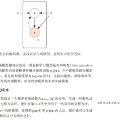Multi-competitor races often feature complicated within-race strategies that are difficult to capture when training data on race outcome level data. Further, models which do not account for such strategic effects may suffer from confounded inferences and predictions. In this work we develop a general generative model for multi-competitor races which allows analysts to explicitly model certain strategic effects such as changing lanes or drafting and separate these impacts from competitor ability. The generative model allows one to simulate full races from any real or created starting position which opens new avenues for attributing value to within-race actions and to perform counter-factual analyses. This methodology is sufficiently general to apply to any track based multi-competitor races where both tracking data is available and competitor movement is well described by simultaneous forward and lateral movements. We apply this methodology to one-mile horse races using data provided by the New York Racing Association (NYRA) and the New York Thoroughbred Horsemen's Association (NYTHA) for the Big Data Derby 2022 Kaggle Competition. This data features granular tracking data for all horses at the frame-level (occurring at approximately 4hz). We demonstrate how this model can yield new inferences, such as the estimation of horse-specific speed profiles which vary over phases of the race, and examples of posterior predictive counterfactual simulations to answer questions of interest such as starting lane impacts on race outcomes.
翻译:暂无翻译



